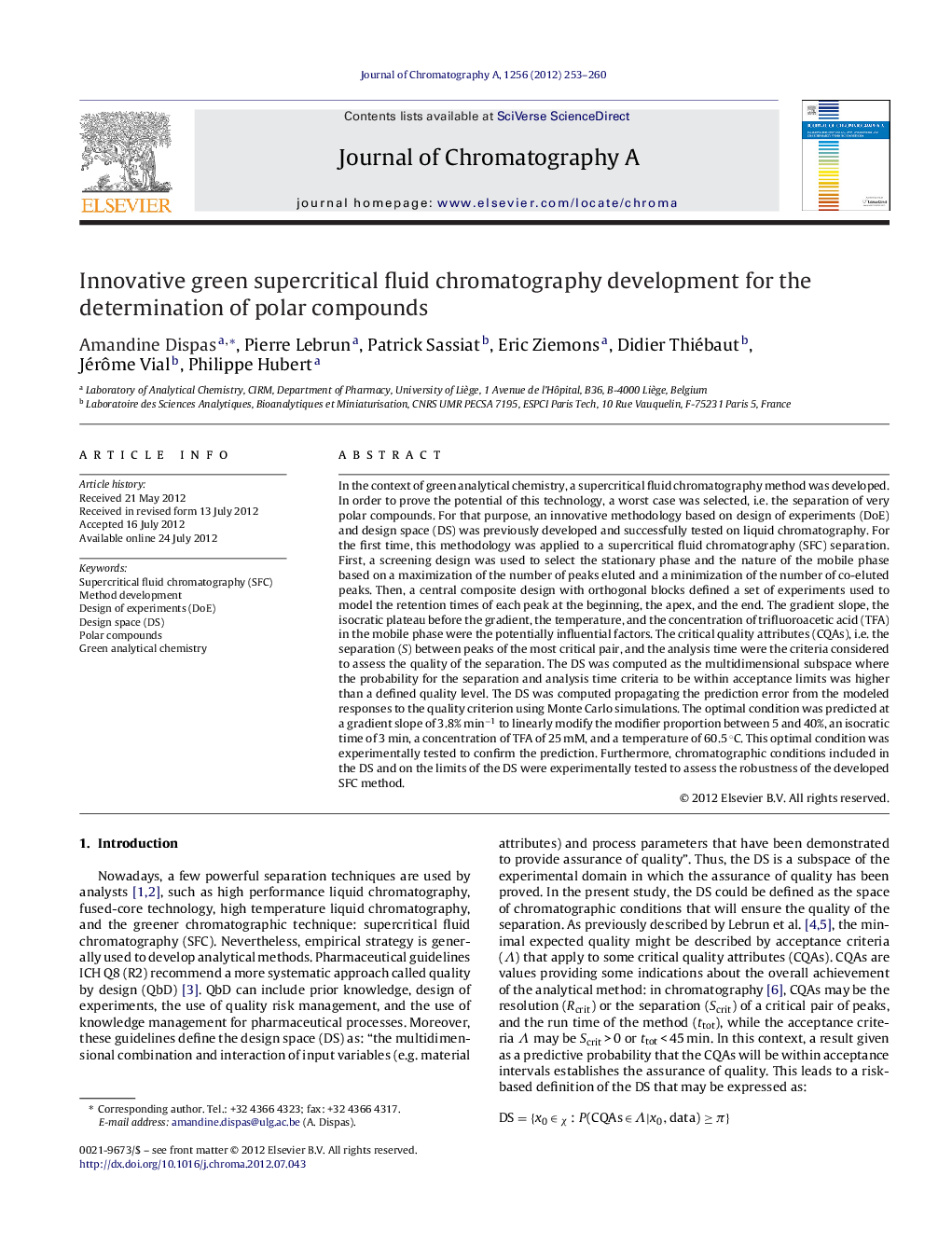| کد مقاله | کد نشریه | سال انتشار | مقاله انگلیسی | نسخه تمام متن |
|---|---|---|---|---|
| 1200402 | 1493669 | 2012 | 8 صفحه PDF | دانلود رایگان |

In the context of green analytical chemistry, a supercritical fluid chromatography method was developed. In order to prove the potential of this technology, a worst case was selected, i.e. the separation of very polar compounds. For that purpose, an innovative methodology based on design of experiments (DoE) and design space (DS) was previously developed and successfully tested on liquid chromatography. For the first time, this methodology was applied to a supercritical fluid chromatography (SFC) separation. First, a screening design was used to select the stationary phase and the nature of the mobile phase based on a maximization of the number of peaks eluted and a minimization of the number of co-eluted peaks. Then, a central composite design with orthogonal blocks defined a set of experiments used to model the retention times of each peak at the beginning, the apex, and the end. The gradient slope, the isocratic plateau before the gradient, the temperature, and the concentration of trifluoroacetic acid (TFA) in the mobile phase were the potentially influential factors. The critical quality attributes (CQAs), i.e. the separation (S) between peaks of the most critical pair, and the analysis time were the criteria considered to assess the quality of the separation. The DS was computed as the multidimensional subspace where the probability for the separation and analysis time criteria to be within acceptance limits was higher than a defined quality level. The DS was computed propagating the prediction error from the modeled responses to the quality criterion using Monte Carlo simulations. The optimal condition was predicted at a gradient slope of 3.8% min−1 to linearly modify the modifier proportion between 5 and 40%, an isocratic time of 3 min, a concentration of TFA of 25 mM, and a temperature of 60.5 °C. This optimal condition was experimentally tested to confirm the prediction. Furthermore, chromatographic conditions included in the DS and on the limits of the DS were experimentally tested to assess the robustness of the developed SFC method.
► Polar compounds were successfully separated by supercritical fluid chromatography.
► The method developed is a green alternative to separate polar compounds.
► Design space methodology was useful to develop a robust chromatographic separation.
► SFC is clearly a promising technique in the framework of green analytical chemistry.
Journal: Journal of Chromatography A - Volume 1256, 21 September 2012, Pages 253–260